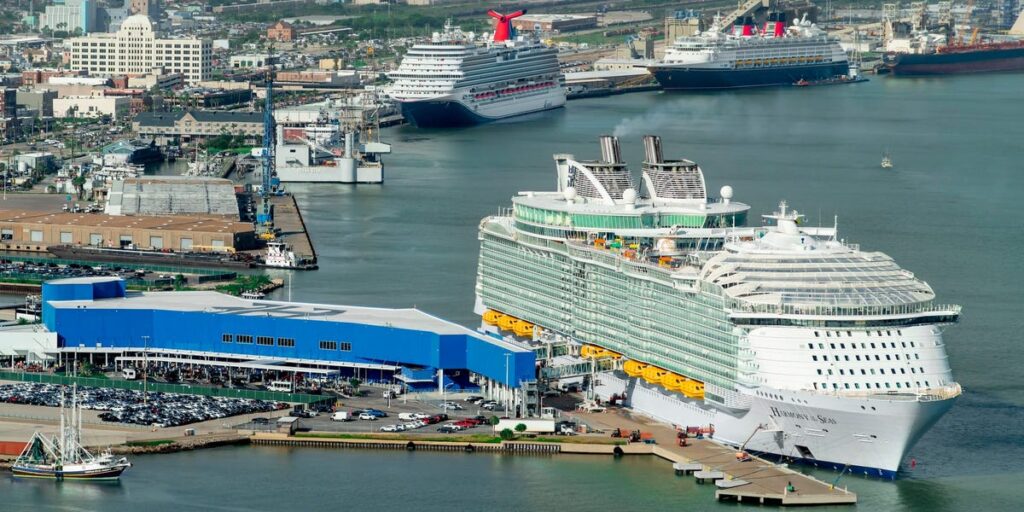- The Port of Galveston, Texas’ only cruise port, expects to accommodate 419 cruise ships in 2025.
- The port had previously exclusively handled cargo and almost filed for bankruptcy in the 1990s.
- Its CEO explains how the influx of cruises spurred an economic turnaround.
In the 1990s, the 200-year-old Port of Galveston almost filed for bankruptcy.
It expects to earn $84 million in 2025, a 6.4% increase from the previous year.
It’s an incredible turnaround. And the port’s director and CEO says it’s all thanks to cruises, which began to spike in popularity following the COVID-19 pandemic
The Texas port spent $53 million expanding Carnival’s cruise terminal in 2023, a year after Royal Caribbean opened a $125 million terminal. A fourth new, $156 million terminal is set to open for Norwegian and MSC’s ship in November.
Galveston expects to accommodate 419 cruises in 2025, a more than 25% increase from three years prior — making it the fourth busiest cruise port in America.
“There was a time we didn’t have enough money to make payroll,” the CEO, Rodger Rees, told Business Insider. “Luckily, the money came in, but they were that tight at times.”
Prior to the turn of the century, Galveston had exclusively been a cargo port. By the 1990s, its decades-old (in some cases, century-old) infrastructure had been in dire need of repair — with money that cargo alone wasn’t generating.
“The port really didn’t have anything going on 25, 30 years ago,” Rees said. “It was like a ghost town out there.”
That is until it began pursuing vacation-at-sea companies, which subsequently spurred a much-needed economic windfall.
“I’ve been selling Galveston to MSC for five years at least,” Rees said. “Becoming a cruise port turned this port around.”
In the shadows of the cruising limelight, the port still continues to receive cargo (primarily vehicles and parts for New Mexico’s coming wind farm, set to become the largest in the US).
However, crucial infrastructure still needs a makeover. For example, the slips have become too small for today’s larger cargo ships and were damaged by Hurricane Ike in 2008.
To address this, the port is now using money from its flourishing cruise business — which accounts for 65% of its revenue — to finance its cargo-related renovations, set to be completed in early 2026.
It’s a $100 million project, about $60 million of which is coming from its cruise revenue.
“Our best year that I’ve been here, we made $10 million in cargo business and $50 million in cruises,” Rees said. “The cargo business has to really grow in order to keep up with the growth of the cruise business.”
Read the full article here
















